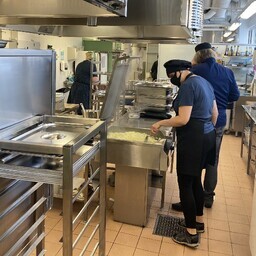The Police and Border Guard Board (PPA) conducted a large-scale operation against human trafficking in June. The operation leader Margo Kivila said that two cases of procurement were found.
Kivila mentioned that no work-related or sexual abuse was found. However, the police collected materials that could lead to new cases.
In Estonia, human trafficking can take two forms. One is work-related human trafficking, where people are forced to work under illegal conditions. The other form is forced prostitution.
Usually, people encounter work-related human trafficking. This happens in construction, service, and catering industries. Victims work in places where they do not directly interact with clients. Human trafficking can also occur in agriculture and forestry.
In cases of human trafficking, people's freedom is restricted. Today, chains are not used as in the slavery of the past. Victims are psychologically, economically, and legally bound.
Victims do not know how European societies function. They do not trust authorities and fear being sent back. Therefore, they obey their superiors.
Victims of human trafficking in Estonia mainly come from Ukraine, Moldova, Romania, and Central Asian countries. People working in prostitution also come from Latin America.

